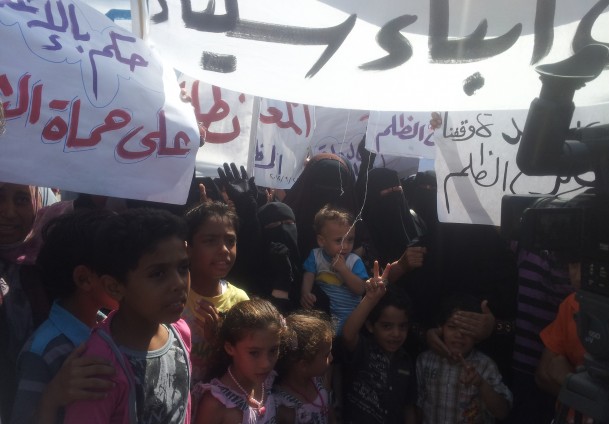
Blood and burned churches. These are the lasting images in Egypt over the past week. Out of context, each are abhorred and condemned by most. However, the unprecedented levels of violence in the country have not only desensitised many Egyptians to such images, but have sparked arguments as observers take parts of the images to feed relatively baseless narratives.
Last Wednesday Rabaa Al-Adaweya was violently and brutally dispersed. Dozens of police and hundreds of demonstrators died in an extended bloody conflict that left many of those unarmed fatal victims to the conflict.
Meanwhile across Egypt, scores of churches were looted and burned. Christian homes and stores were also attacked as families fled to calmer villages nearby to take refuge. Since Wednesday there have also been a number of fatal attacks on Copts.
The police crackdown on supporters didn’t end with the dispersal of Rabaa Al-Adaweya, just as death tolls in Sinai haven’t let up and attacks on Christian communities have not ended. It has been a week of new death tolls as body counts of previous violent outbreaks are still being updated.
In a battle between clashing leaderships, collective punishment has become a way to attack sides. Suppression has gone beyond holding Muslim Brotherhood leadership or armed protesters accountable. The term “terrorist group” is beginning to be used by government officials and political opponents to refer to the Brotherhood, and it is and used to justify collective action against an entire group.
Christians have experienced an unprecedented wave of attacks. Bishop Ermia earlier this week said 65 churches and 22 church ministry buildings had been attacked throughout the week. The rhetoric on the stage of Rabaa Al-Adaweya coupled with pre-existing sectarian tensions in villages of various governorates had indicated that Christians would also be victim of collective punishment.
During Egypt’s bloodiest week in a sporadically violent two and a half years, leadership on many sides has attempted to politicise losses. The government and Brotherhood alike pick and choose between human rights reports that paint their opponents as in the wrong, while rejecting reports from the same groups and replacing them with half-baked conspiracy theories devoid of evidence.
Earlier this month Minister of Foreign Affairs Nabil Fahmy wrongly claimed that an Amnesty International report showed that there was heavy weaponry at the Rabaa Al-Adaweya sit-in. The human rights organisation swiftly issued a statement distancing itself from the minister’s comments, as they did not represent any of the work published by Amnesty International; the Brotherhood was just as swift to communicate that a prestigious international organisation had called Egypt’s new foreign minister a liar.
However what Amnesty International did publish (and possibly what Fahmy had misleadingly meant to allude to) was a report with eyewitness testimonies of torture inside the pro-Morsi sit-in, a report that was not heeded by supporters of Morsi the same way human rights reports condemning excessive use of lethal force have been ignored by the government.
Sectarian attacks have been used in the same manner. The Brotherhood and its supporters, known for their scapegoating of Christians, were happy to use Pope Tawadros II to allege a grand conspiracy involving Christians to overthrow Morsi.
Ahrar 25, a station created after some Islamist channels had been shut down, aired an interview in which Islamist writer Mohamed Abbas alleged that 30 June demonstrations consisted mostly of plain-clothed policemen and 600,000 Church-mobilised Christians. Copts and their places of worship, frequent victims of collective punishment, paid a heavy price.
The Brotherhood, over the past month, has repeatedly alleged that state security carries out such sectarian attacks with no proof. The “evidence” is that the government, in an attempt to smear the Brotherhood, would benefit most from attacks. This has been done without recognition of the hate speech commonly heard on the stages of its demonstrations and found on their Arabic-language websites. The allegations also ignore eyewitness testimonies saying that other villagers were involved in many of the attacks.
On the other hand, the government has used church attacks to “show the world” that the Brotherhood is a “terrorist organisation,” and has comfortably blurred the line between incitement and attacks. And while authorities have used sectarian violence as a way to shame foreign media, very little has been done to prevent or intervene in attacks on Christian places of worship, homes, and businesses, even as Coptic communities remain under threat.
Assem El-Gamal, a microchip manager, was not a terrorist when he was killed by security forces in Rabaa Al-Adaweya. Mina Raafat Aziz was not a co-conspirator in a coup d’etat when he was pulled out of his taxi in Alexandria by pro-Morsi demonstrators and killed.
Unfortunately, deceiving binaries serve as justification for various actors’ positioning and set narratives now take precedent over evidence (or lack thereof), and those binaries will be used to justify collective punishment, as each side proceeds to either mislabel collateral damage or blame it on someone else.




